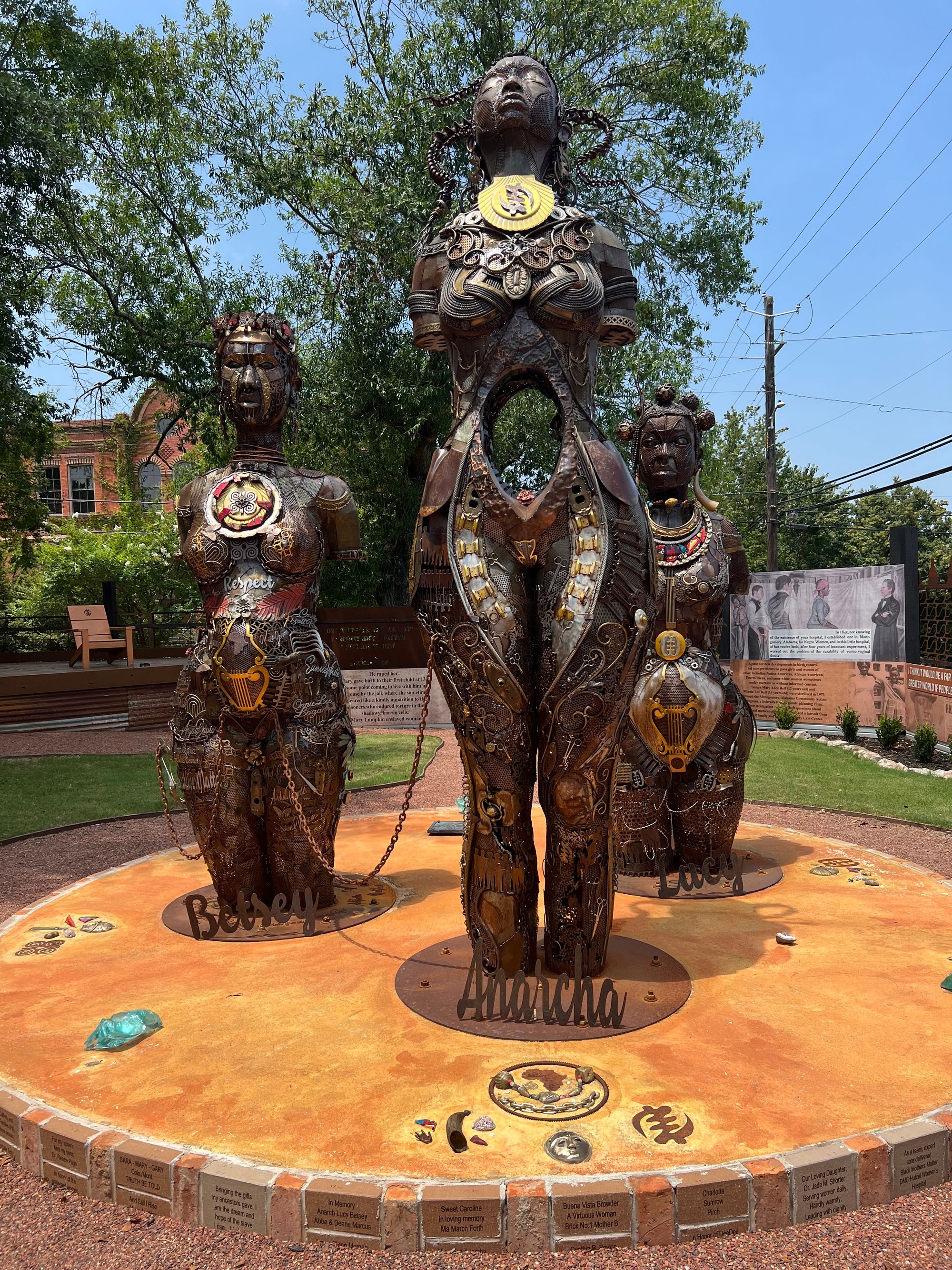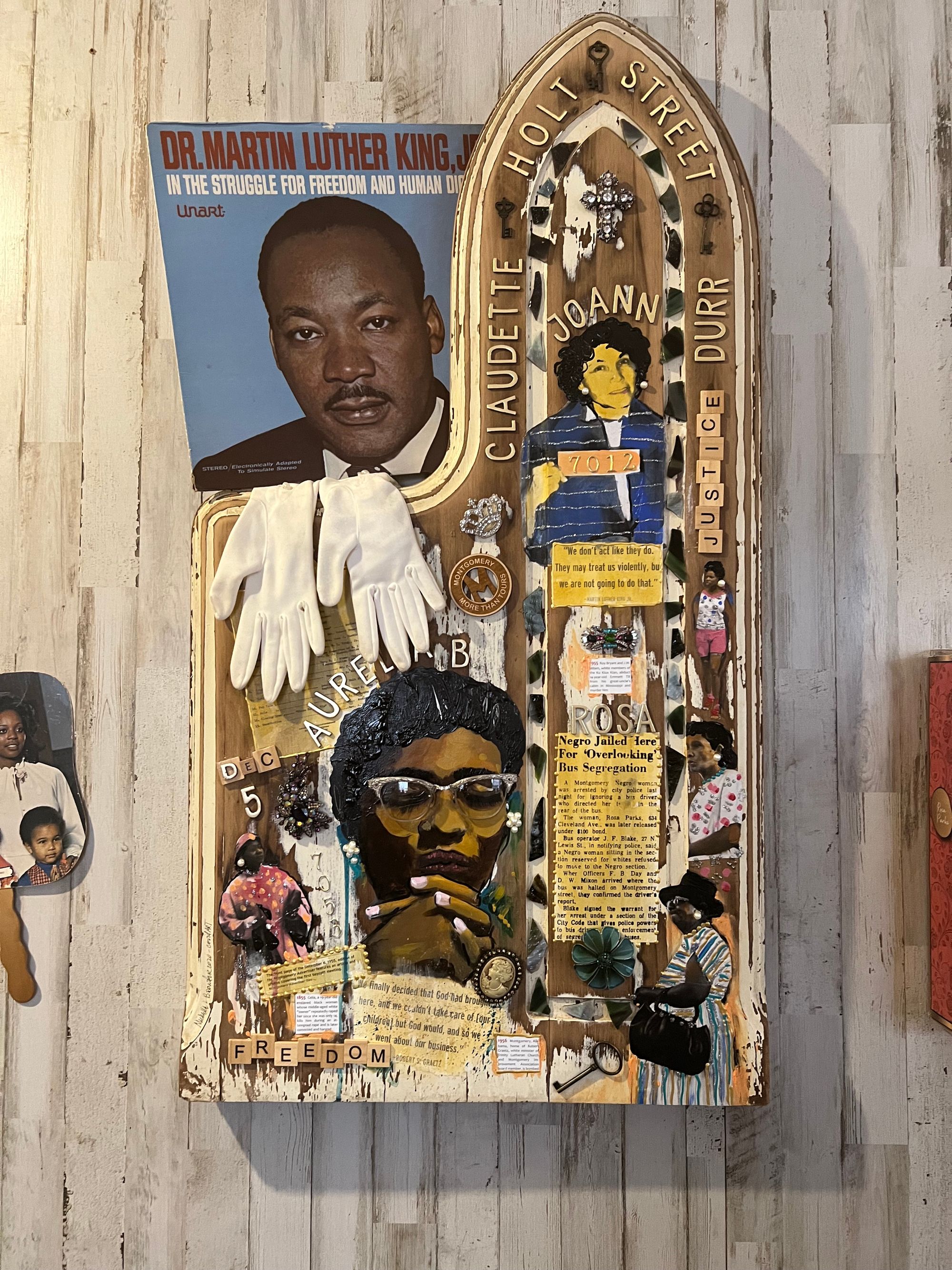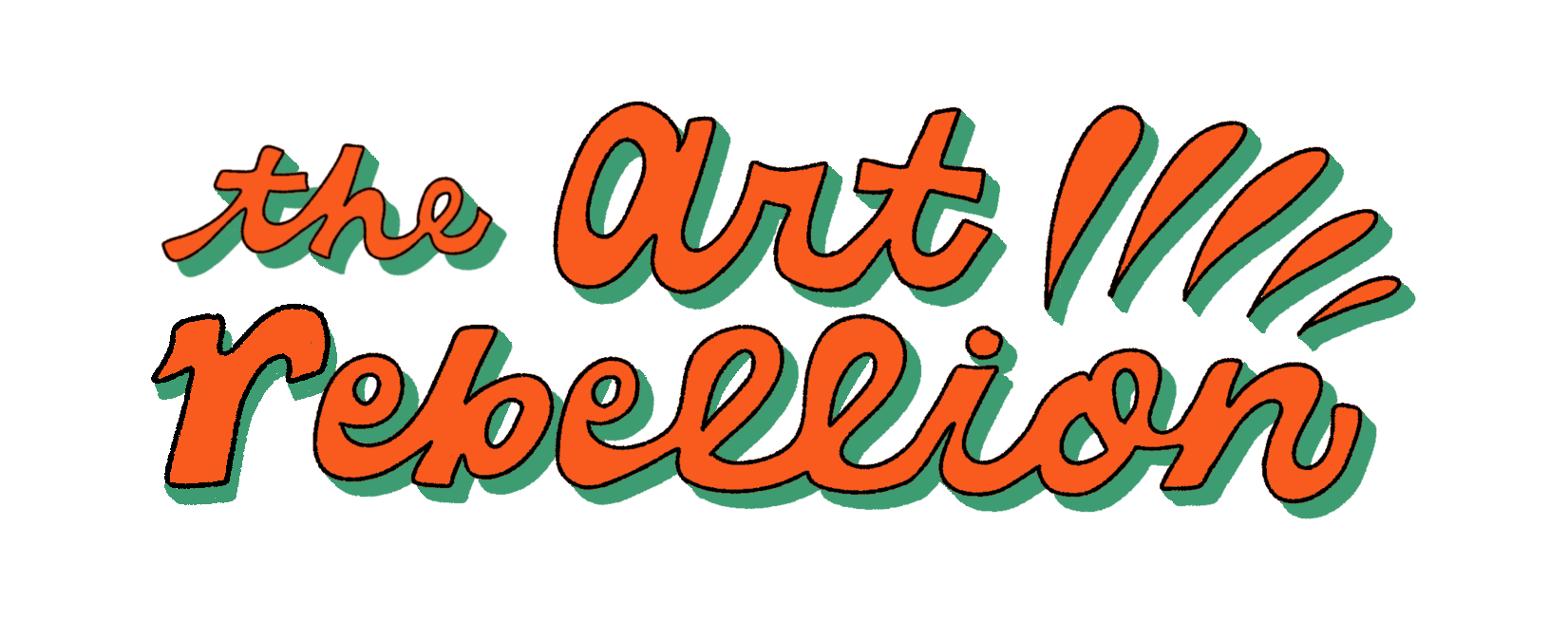$napshot: $1,000 a month as a stylist and creative in Chicago
Based in Chicago, this artist typically earns between $600 to $1,000 a month for a range of jobs including after-school programming, styling services, videography, and bartending.
Welcome to the art rebellion, a newsletter amplifying the essential role of artists in our society and the stories of artists who fight to make their communities better.
For the Artist Pay Project, I spoke to a Chicago-based creative who typically makes between $600 to $1,000 a month for a range of jobs including after-school programming, styling services, videography, and bartending.
"Being a creative or an artist means that sometimes your financial security wavers," they told me.
Right now, they're struggling with demand — creating art and advertising it is one piece of the puzzle, but if people don't actually need their work, or can't afford it, that creates a massive challenge.
This artist also said it can be intimidating to ask for fair pay, which is something that has come up repetitively in my interviews.
Keep reading to learn more about their financial story.

Survey
Art Practice: Clothing stylist and overall creative
Location: Chicago, IL
Age: 24
Pronouns: They/ Them
Earnings
Income:
$600 to $1000 a month
How much of your income is from your art practice?
50% to 75%
Where does the rest of your income come from?
I'm transitioning into a new job, where I'll be doing after school programming. But in the past, I've worked so many interesting jobs. I've worked in food, but I've also worked in clothing stores. Basically anything that will pay enough to get me by.
Can you describe your creative work?
I am a stylist that offers clothing styling and personal shopping for my clients. I sometimes sell clothes as well. I’ve also done freelance teaching jobs for playwriting at schools, acting/ performance gigs, bartending, and freelance videography editing.
How much were you paid for recent freelance or contract work related to your art practice?
I did a videography commercial filming editing job and I got paid $2500 over the duration of 3 to 4 months. I took a client and personally shopped for them for $50. I was paid $150 to style a video shoot.
Expenses
Housing:
I'm living with a friend. I'm actually going to be moving into my own apartment, but that has been fluctuating. I pay for a portion of rent, so anything from $100 to $250.
What are your major monthly expenses?
Transportation — I can spend anywhere from $50 to $85 a week.
Food — $60 to $100 a month depending on how often I’m eating out.
Do you have any expenses related to your art practice?
Buying clothes and accessories I may revamp and sell, or display in my promotion videos can be $50 to $60 a month.
Larger financial picture
Do you have any financial support from outside sources?
Not at the moment
Have you received any grants to support your art?
I’ve received emergency grants during the pandemic, but not specifically to support my art. The most I may have received is $500.
Do you have health insurance?
Yes, Medicaid
Do you have any debt?
I have $20,000+ in college loans. Not sure if my loan forgiveness has been processed or accepted.
Do you have any savings?
No
Did you pursue higher education?
Yes, I attended Minneapolis Community and Technical College for a year, then I transferred to University of Illinois at chicago where I attended for 2.5 years. I majored in Acting.
Q&A
How do you feel about your financial security as an artist?
Being a creative or an artist means that sometimes your financial security wavers. There'll be moments where I feel like I'm secure. But then there's other moments, like right now, where I'm in the in-between area, where I'm waiting for my gig money to come in. Or I'm waiting to start a new job, and it can be challenging. At times like that, I've had to reach out to other people — people within my community for help and support, because I just feel like sometimes the money isn't as consistent. Or you really have to plan out your life to make sure you're stable.
I think that can be a little bit overwhelming being an artist. I have to do a lot of self-regulation. Because I don't always have a consistent stream of income, I have to be more vigilant of it and plan more ahead. I'm not gonna lie, it's been pretty bumpy and I feel like right now, during this time, it's been really hard and challenging because there's a lot of issues with inflation and also issues with home security.
We're still in a pandemic, and also we're still experiencing a racial uprising. So a lot of things are happening. Things are not really getting less expensive, things are getting more expensive. I just feel like the demands for what we need — at least for me as an individual — are not necessarily being met. So it's been very challenging.
What are some of the specific challenges you face as an artist when it comes to making a living, being paid enough to live?
The biggest challenge is you can do all the work on your end, you can advertise, you can connect, and you can do stuff for your business, or stuff for you as an artist, but it's really up to the people and what they need and when they need it. I think what I'm struggling with a little bit right now is the demand, and making sure I am doing my work and putting my work out there when it's actually demanded. I could do all my work on my end, but it's just like, oh, it's not really needed. People are not able to spend money right now. You can kind of be stuck in a pickle. I also think what I've learned is being able to be flexible and come up with different solutions fast.
The challenge is creating just to create, but also creating because that's now a part of your income, like trying to find the balance within that too.
You mentioned transitioning into a new job. Is that a full time job or is it part time?
It's part time hours. I will be working regularly throughout the week, but it is part time hours so I still have time to do other stuff. I like that it's part time because I can have time to do other things that I would like to do.
What resources do you think would help you the most when it comes to making a living and being able to make your art as well?
Having more resources that pay for themselves. I have SNAP and that's been super helpful for me not having to worry about paying for groceries as much. Of course, I only have a certain amount of money, but still that's really helpful. Also, maybe not having to pay for cleaning stuff for your house, or things like toilet paper. Just having those things taken care of, so that when it does come to rent, or paying for your utilities, and things like that, I don't necessarily have to worry about that and I can feel like I have enough to be stable.
Do you think pay transparency can help artists and if so, how?
I definitely think it's helped. It can be a little intimidating, unfortunately, for artists — or at least speaking for myself — to say this is my worth. And saying, I'm not going to take this job unless I feel like I'm getting paid enough. It can be tough, putting artists in a bit of an uncomfortable situation because like, yeah, maybe you do need the money, or it isn't enough, but you need money to survive in this world.
But having more workshops or resources that help people know how much they should be charging other people as an artist, because I think for me, that's been a little bit challenging. I think there's just so many complexities with what my service can do and also me wanting to work with people and be accessible, but also get the money I need too so I can continue on.
Is there a salary you’re aiming for? What do you think you would need to live comfortably and do your creative work?
I'm really bad at putting big numbers to how much I like to make. I never really think about it that way because I'm always just like — okay, on to the next thing. I don't know, I never feel like I have time to think about that. Honestly, I would want to be making like $1,000 a week, or just a livable wage, where I actually don't have to worry about making ends meet. Or I don't necessarily have to live paycheck to paycheck.
I believe livable wage is supposed to be $25 an hour, or something like that — the actual minimum wage so people can be stable. I feel like if we all were at that point where people could just have a livable wage, and it's minimum wage, and they can work part time or not work as much — I would just desire that for everyone. When I think about myself, I think of other people too, because it's not just about me, it's about the entire collective. And if I'm able to achieve these things, I don't want to be taking up so much space where other people are suffering or my gain is detrimental to other people. I don't feel like I need to make so much money and be this billionaire or anything like that. I just be wanting to have enough money so I'm okay.
Linky links
- Vogue as an act of resistance: NYC's ballroom community paid tribute to dancer O'Shae Sibley who was killed after dancing to Beyoncé's "Renaissance" at a Brooklyn gas station.
- "I would love it if every dancer in QDF who wants to quit their day job could and just dance." Interview with the company leads of Queer Dance Freakout, a Chicago-based dance company.
- Mini documentary featuring conceptual artist Hank Willis Thomas.
Art watch
About two weeks ago, I took a quick trip to Montgomery, Alabama. I was there for Michelle Browder’s Mothers of Gynecology monument, an artwork dedicated to the enslaved women who were tortured in one doctor’s pursuit of medical innovations.
After learning about Browder earlier this year from a PBS segment, I knew I had to see the monument and hopefully meet the artist. In advance of the trip, I signed up for a Civil Rights tour from Browder’s organization.
And on a very hot Saturday morning, I spent hours with archivist and storyteller Joseph Trimble, who gave me a private tour of the city and some of the most important sites in the Civil Rights movement. We ended the tour at the Mothers of Gynecology installation.
The monument is about a mile from a statue of J. Marion Sims at the state capitol, a white doctor known as the “father of modern gynecology.” For 5 years in the late 1840s, Sims conducted surgeries on enslaved women without consent or pain relief. Sims' experimentation led to the invention of the modern day speculum, a tool still widely used during gynecological exams.
Browder’s larger-than-life monuments rewrite the narrative by honoring Anarcha, Betsey, and Lucy, three enslaved young women who were victims of Sims’ horrific abuse.

Made of scrap metal, the 15-ft, 12-ft, and 9-ft monuments are adorned with painful and meaningful symbols — chains, specula, scissors, flowers, jewels, elaborate hairstyles, inscriptions of the names of influential Black women. (I made a short Reel showing more of these monuments).
Although I wanted to meet Browder and ask for an interview, she unfortunately wasn't available.
When I spoke to an attendant working at the site, she told me that Browder had recently taken a camper and driven to Selma to offer healthcare services to women in the community. Browder also received funding to open a museum, clinic, and training space for medical students, gynecologists, doulas, and midwives.
Her work is the epitome of what the art rebellion represents, and how artists can shape their communities into more beautiful and equitable places.

The trip was brief but incredibly special, and I hope to return sometime soon to pursue new stories.
As always, thank you for reading!
Please consider sharing the newsletter with a friend subscribing, and following our Instagram account.
See y'all next time 😊.
